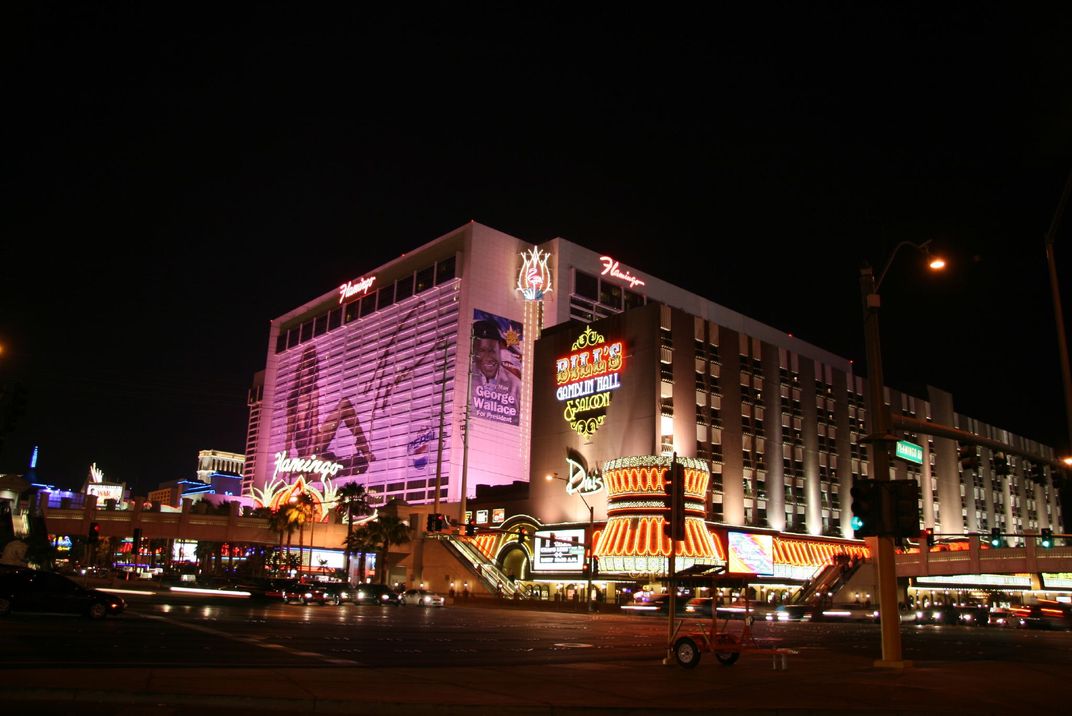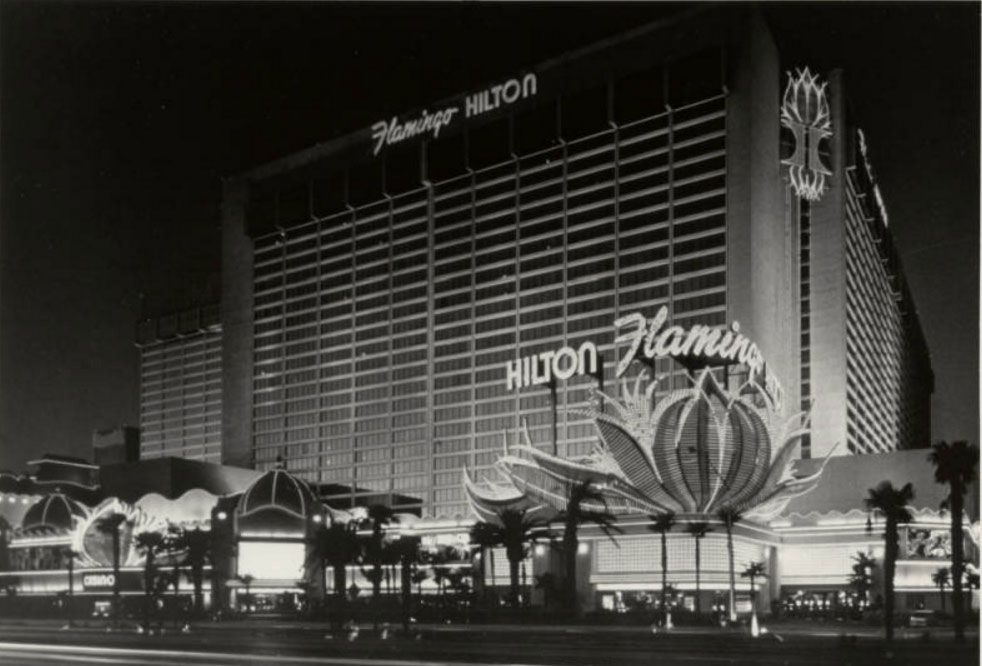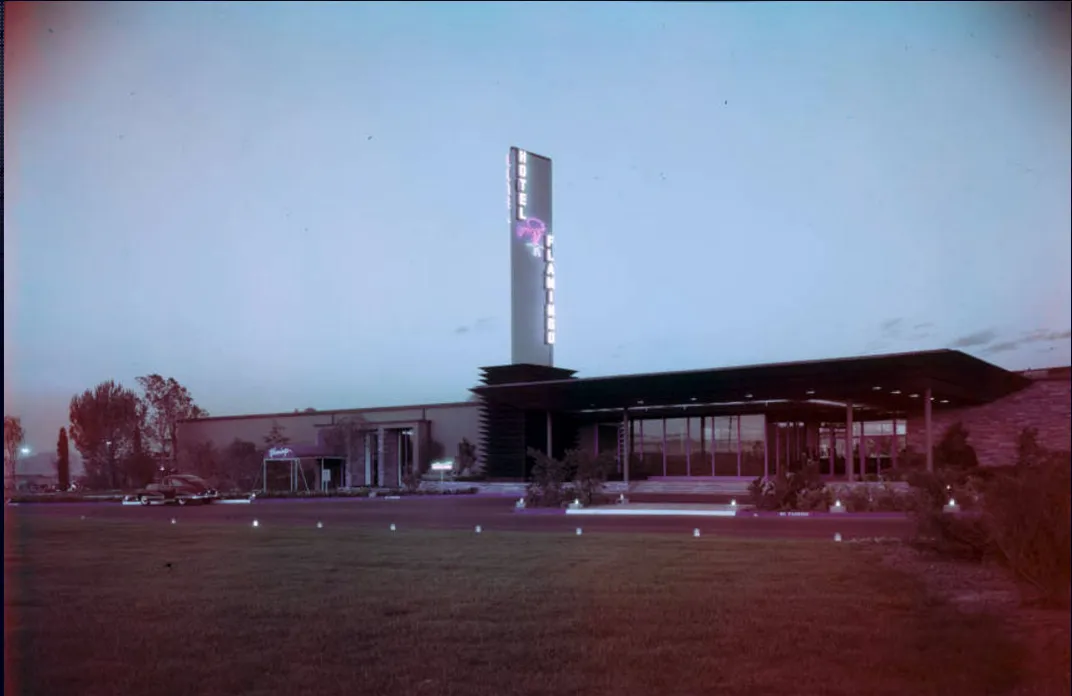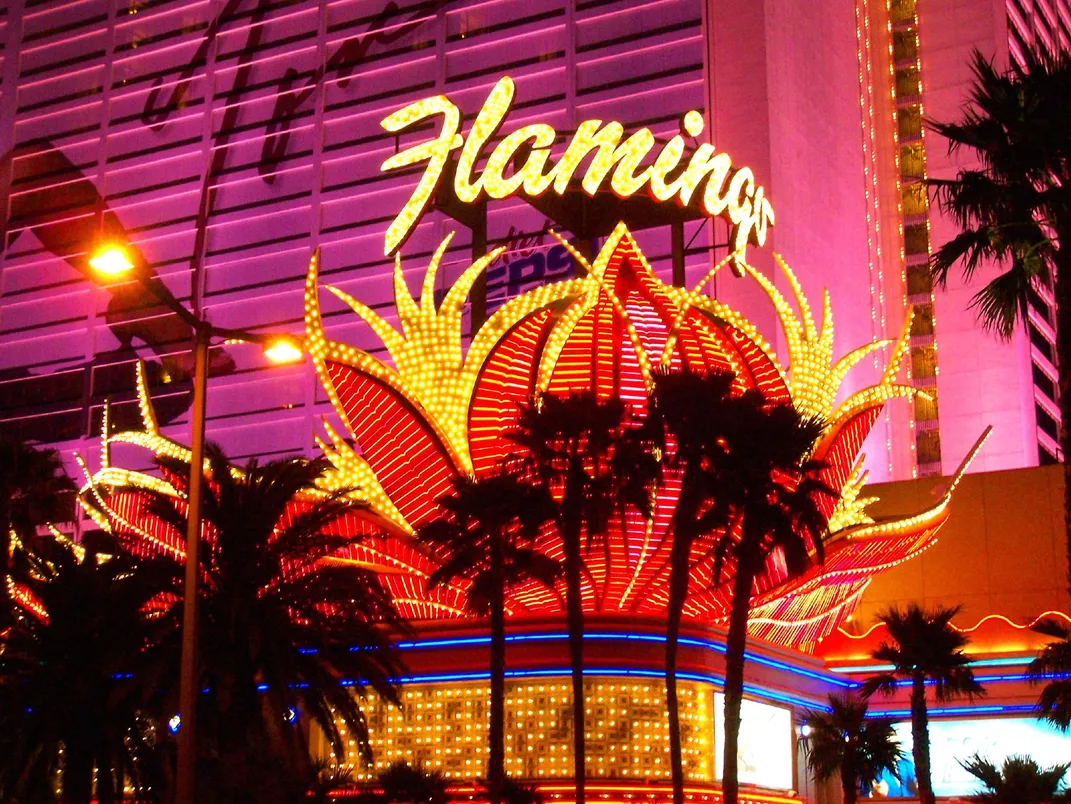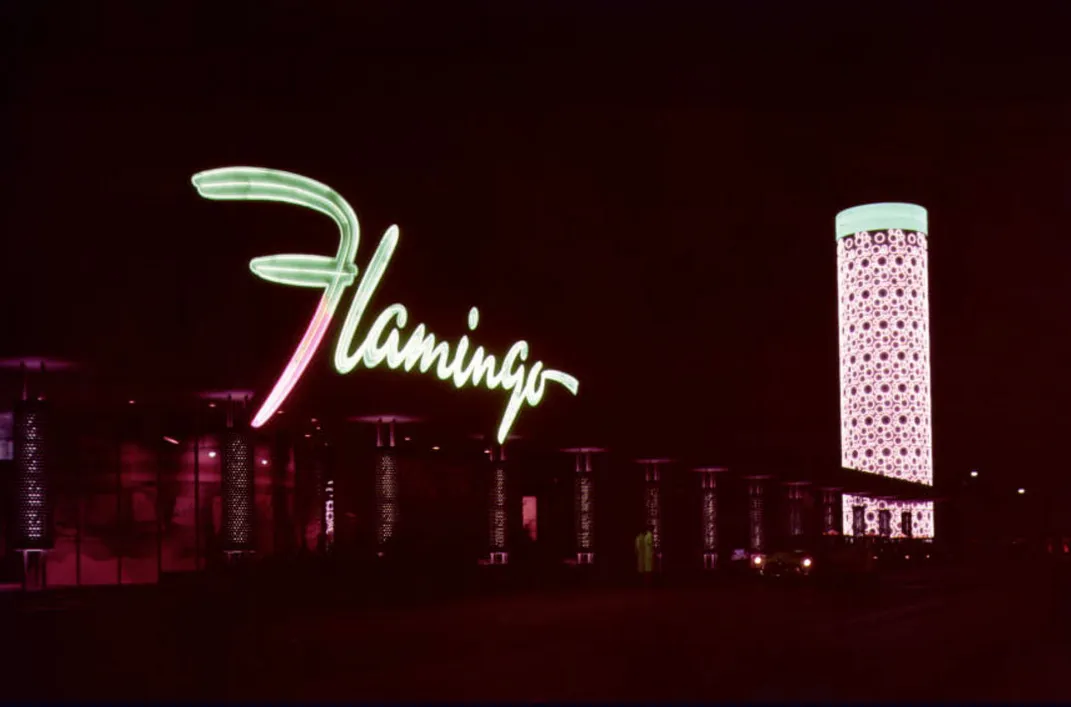The Stylish Flamingo Hotel Shaped the Las Vegas Strip
The Flamingo, still operating today, is the oldest hotel on the Strip
/https://tf-cmsv2-smithsonianmag-media.s3.amazonaws.com/filer/99/c1/99c10689-628a-40a1-a679-1d1739967db4/flamingo2.jpg)
The name had to be eye-catching. It had to be glamorous. It had to be exotic. Billy Wilkerson, founder of the Hollywood Reporter and gambling addict, knew his audience.
So he picked the Flamingo, naming his improbable postwar venture after a gaudy bird that doesn't spend time in the Nevada desert. Wilkerson's idea was an unprecedented development that helped to shape Las Vegas and the model that modern casinos operate under. With mobster Bugsy Siegel as a silent backer, he built a casino and hotel that would suck gamblers in and retain them, setting the stage for Las Vegas's midcentury casino boom.
The desert town "had never seen such opulence before," writes Online Nevada Encyclopedia: "The Flamingo featured a trapshooting range, nine-hole golf course, tennis, squash, badminton and handball courts, as well as extensive landscaping with imported Oriental date palm and Spanish cork trees. Members of Siegel's staff wore tuxedoes. Siegel preferred to attract wealthy clients who dressed with 'class' in formal attire while in the casino."
At the center of it all was a casino that had no clocks and no windows. "Guests would not be able to go anywhere without passing through the games," writes Bob Pajich for Card Player. The Flamingo set the vision for the big casino-hotels that shaped the Strip’s big years. It was also a setting for some of the films that helped to shape the public perception of the Las Vegas strip. Both Viva Las Vegas and the 1960 version of Ocean’s 11 have scenes shot in the hotel.
Before the Flamingo, casinos in Las Vegas were small, Wild West-themed joints, with nothing like the glitz and style that the Strip would come to be associated with. But Wilkerson's idea took some time to come to fruition: the hotel had already cost $4 million in 1946, and it still wasn’t finished on opening night, writes the encyclopedia. So he planned a grand opening, complete with appearances from A-list Hollywood actors and a show by singer and comedian Jimmy Durante with the backing of a Big Band outfit led by Xavier Cugat.
It was supposed to be the show of the year, and attract money to complete the unprecedented hotel and casino development. Unfortunately, it rained, grounding many A-list guests and putting a damper on the proceedings. “Of the guests who turned up, most couldn’t get a room since the hotel wasn’t actually finished, so they went elsewhere to gamble,” writes Troy Lennon for The Daily Telegraph.
Siegel was there to see the dismal opening, Lennon writes. He “was so disappointed with the hotel’s performance he shut it down after two weeks. It soon reopened–more successfully–and helped change the face of Las Vegas,” Lennon writes.
Less than a year later, Siegel would be dead–shot by his Mafia colleagues in his Beverly Hills home. Wilkerson was pushed out, too, and returned to his newspaper, where he would play an influential role in shaping the Hollywood Blacklist. But the Flamingo lived on: Today it is the oldest operational casino on the Strip.
Take a look at its era-making aesthetic:
